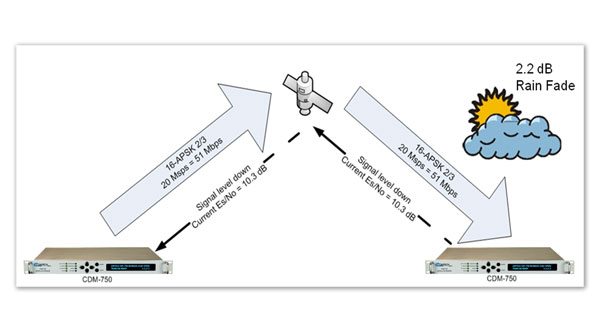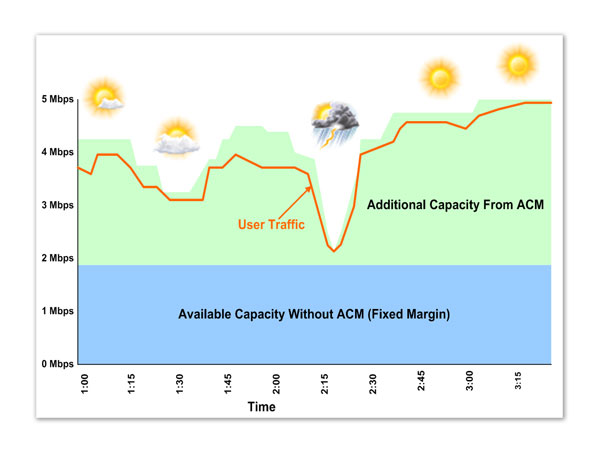Adaptive Coding and Modulation is a statistical, non-static advantage that enables dynamic changes in user throughput. Benefits and value vary over time and are not guaranteed, but are predictable. ACM technology converts link margin to an increase in the data throughput of satellite links. Only non-synchronous data networks (such as Ethernet packet-based networks) can take advantage of a dynamic data throughput rate. All satellite links are designed to function at a certain annual availability. The closer to 100% we demand of our link availability, the more link margin we need to meet this demand and thus the greater the value of ACM.
Rain fade, inclined orbit satellite operation, antenna pointing errors, noise and interference can all degrade satellite link conditions. These conditions determine the overall link margin of a system. Satellite users have traditionally relied on worst-case link margin to overcome rain fade and other impairments, which leads to significant inefficiencies. When utilizing ACM operation in our modems and Advanced VSAT Solutions, link margin can be converted into increased throughput of satellite links. With the ability to maximize throughput under all conditions – rain fade, inclined orbit satellite operation, interference or other impairments – ACM allows remotes to achieve maximum throughput thereby maximizing network efficiency and availability.


